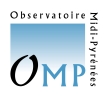|
|
|
|
English version
|
Outline:
1. Presentation of PISCO
2. A few results obtained with PISCO
3. Theory of the atmospheric dispersion correction (in French)
1. Presentation of PISCO
PISCO (Pupil Interferometry Speckle COronagraph) is a focal instrument whose purpose is to obtain high angular resolution images using interferometric techniques which permit to circumvent the natural degradation produced by the atmospheric turbulence. Fixed at the focus of a telescope, it allows the acquisition of short exposured images with a large magnification. Chromatic dispersion caused by the atmophere is corrected by Risley prisms. The elementary images are digitized and processed using bispectral techniques, developped by our team. PISCO is now dedicated to the study of binary stars.

PISCO
optical design.
PISCO was designed and built at Midi-Pyrénées Observatory (OMP) between 1991 and 1993. All the parts of this project were handled at OMP (designing, mechanics, optics, electronics and control). This instrument was then used by the astronomical community at Pic du Midi on the Bernard Lyot Telescope (TBL) until 1998. Due to a change of policy by the time-allocation comittee, it could no longer used at Pic du Midi after 1998. A European group of « PISCO users » was constituted in 1993-1998, with astronomers involved in the study of binary stars. This group then decided to look for another host telescope on which PISCO could be mounted and operated on a regular basis. In November 2003, PISCO was successfully installed at the Cassegrain focus of the 1-meter Zeiss telescope of Brera Observatory in Merate (Italy). After a few weeks of tests it became fully operational in January 2004. Subsequent observations confirmed the possibility of observing visual binaries with separations down to 0"14 and with luminosity differences up to 4 magnitudes. More than 10 papers have already been published from the observations made in Merate.
Members of our team: Scardia M. (Italy), Prieur J.-L. (OMP), Koechlin L. (OMP), Aristidi E. (Univ. Nice), Ghigo M. (Italy), Pansecchi L. (Italy), Sala M. (Italy), Argyle R.W. (England), Lampens P. (Belgium), Strigachev A. (Bulgaria), Oblak E. (Besançon), and Kurpinska M. (Poland).
For more information, see the figures below, the PISCO presentation, and the Observation report made in Merate in 2004.
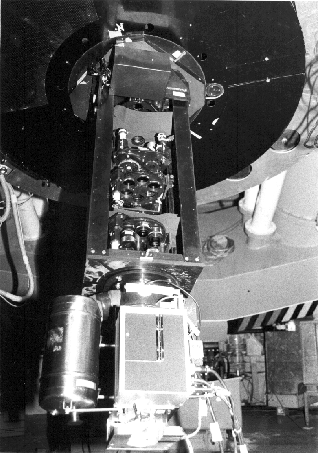 |
|
PISCO at the TBL with the CP40 from INSU (left) and with the resistive anode detector from OCA.
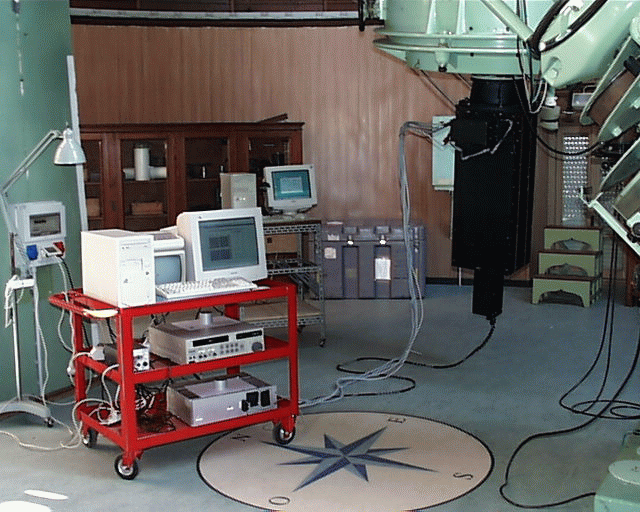
PISCO at the Cassegrain focus of the 1-meter Zeiss telescope of I.N.A.F. -- Brera Astronomical Observatory (Italy) with the ICCD camera of Nice University (France).
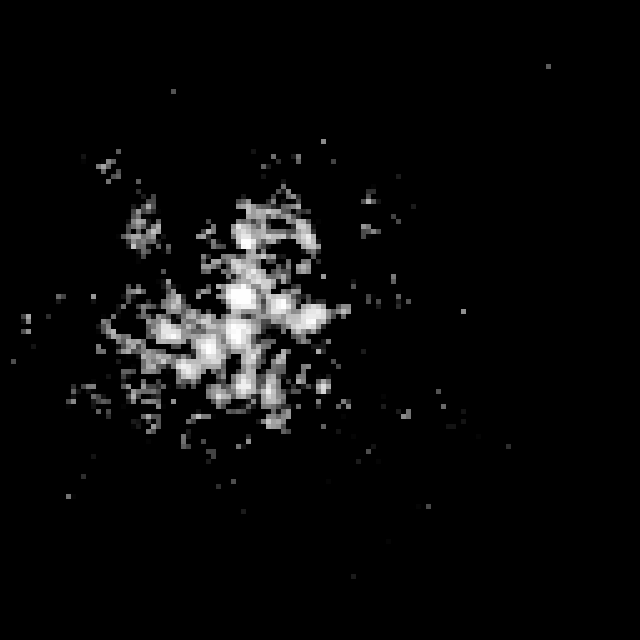
Short movie of a series of short-exposures (4 ms) of ADS 8128, from observations made with PISCO in Merate. It shows the random motion of the images, with the presence of some small bright patches, known as speckles, that are produced by the atmospheric turbulence. The angular separation of this binary was 0"46, and its position angle was 44 degrees (measured counter-clockwise from the North direction (here: North to the bottom and East to the right)). ICCD detector, gain=6, R filter, 10 mm eyepiece. Field size: 128 x 128 pixels, or 4"1 x 4"1.
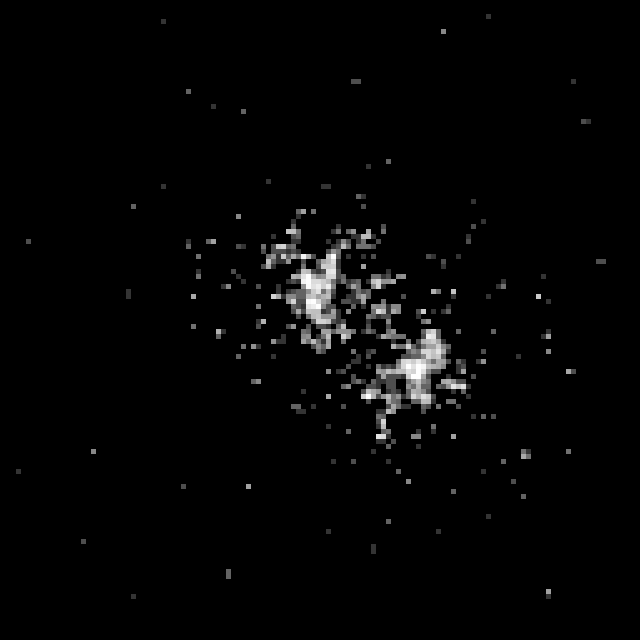
Short movie of a series of short-exposures (10 ms) of ADS 7286, from observations made with PISCO in Merate. It shows the correlation that exists bewteen the images of the two stars, that lie within the isoplanetic patch of the atmospheric turbulence. The angular separation of this binary was 1"94, and its position angle was 46 degrees. ICCD detector, gain=6, R filter, 20 mm eyepiece. Field size: 128 x 128 pixels, or 9"6 x 9"6.
2. A few results obtained with PISCO
Here are some high angular resolution
images obtained with PISCO and the ICCD detector of Eric Aristidi's
team from Nice University:
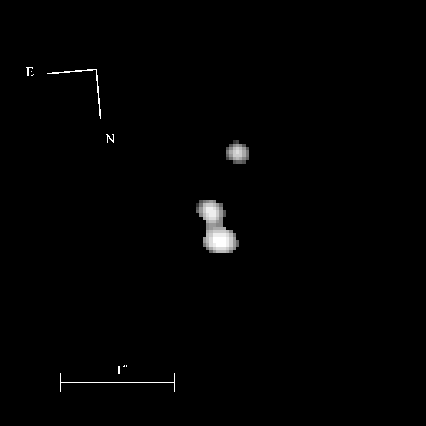 |
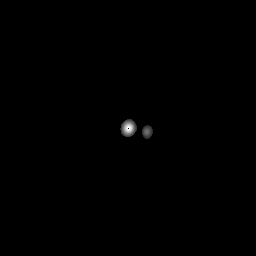 |
2 Cam, triple star with separations 0"25 and 0"59
(left) |
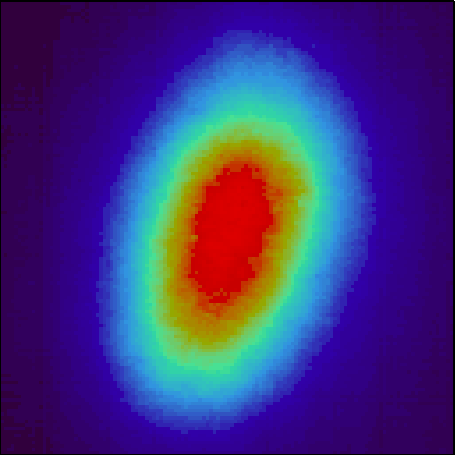 |
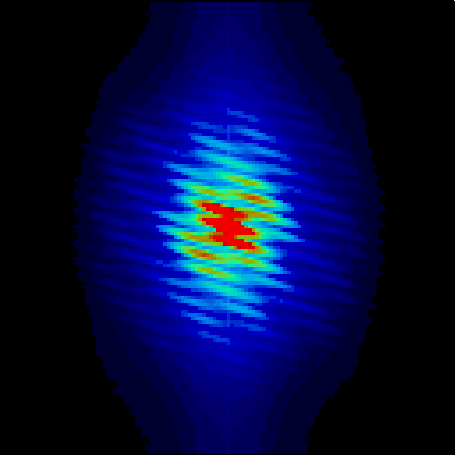 |
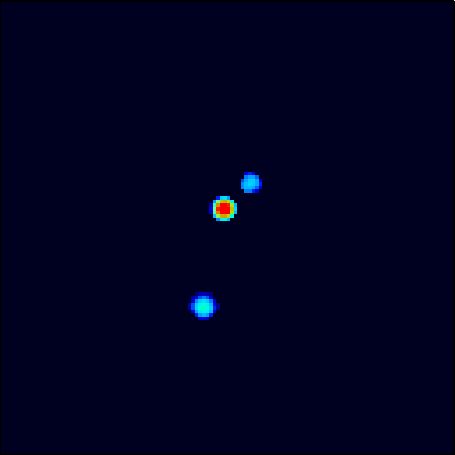 |
Example of data reduction with ADS 11344 (left: long exposure, center: power spectrum, right: restored image). Angular separations between the 3 components are 0"3 and 0"7. The observations were performed in 1997 at the Bernard Lyot telescope.
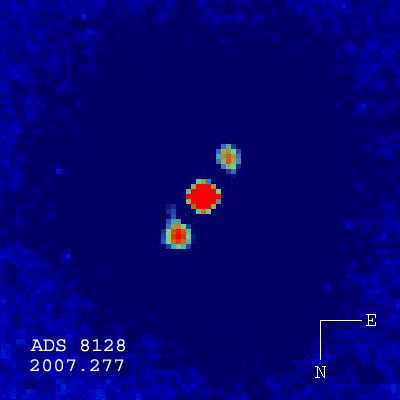
Short movie of a series of autocorrelations of ADS 8128, from observations made with PISCO in Merate. The angular separation is around 0"25—0"30. The date of observation is displayed in the bottom left corner of each image as a decimal year (in Besselian years).
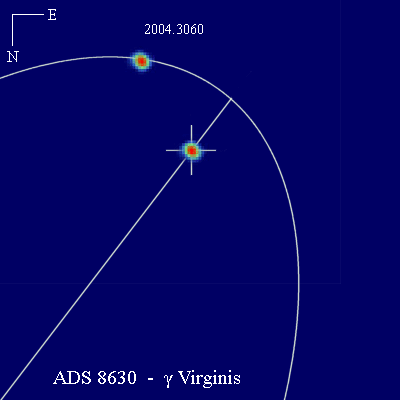
Short movie of a series of autocorrelations of ADS 8630, from observations made with PISCO in Merate. We can see the apparent motion of the secondary peaks, that are superimposed on the orbit we computed in 2006. The minimum angular separation during the periastron passage in 2005 was 0"43. The dates of observation are displayed on the right of the companion as decimal years (in Besselian years).
You can also find some other information in:
- New orbit of Gamma Virginis (ADS 8630)
- General report on PISCO (PDF document made in 2010)
- Report of the observations made in Merate until now
For a more information look at the list of PISCO publications
Note that some of our results have been "advertised" in the front cover of scientific journals:
 |
 |
Page of the 2012 calendar of Brera Observatory:

Contact :
![]() Jean-Louis Prieur
Jean-Louis Prieur
Institut de Recherche en Astrophysique et Planétologie (IRAP)
Observatoire Midi-Pyrénées
14, Av. Edouard Belin
31400 Toulouse, France.
![]() (33) 5 61 33 28 83
(33) 5 61 33 28 83
![]() (33) 5 61 33 28 40
(33) 5 61 33 28 40



